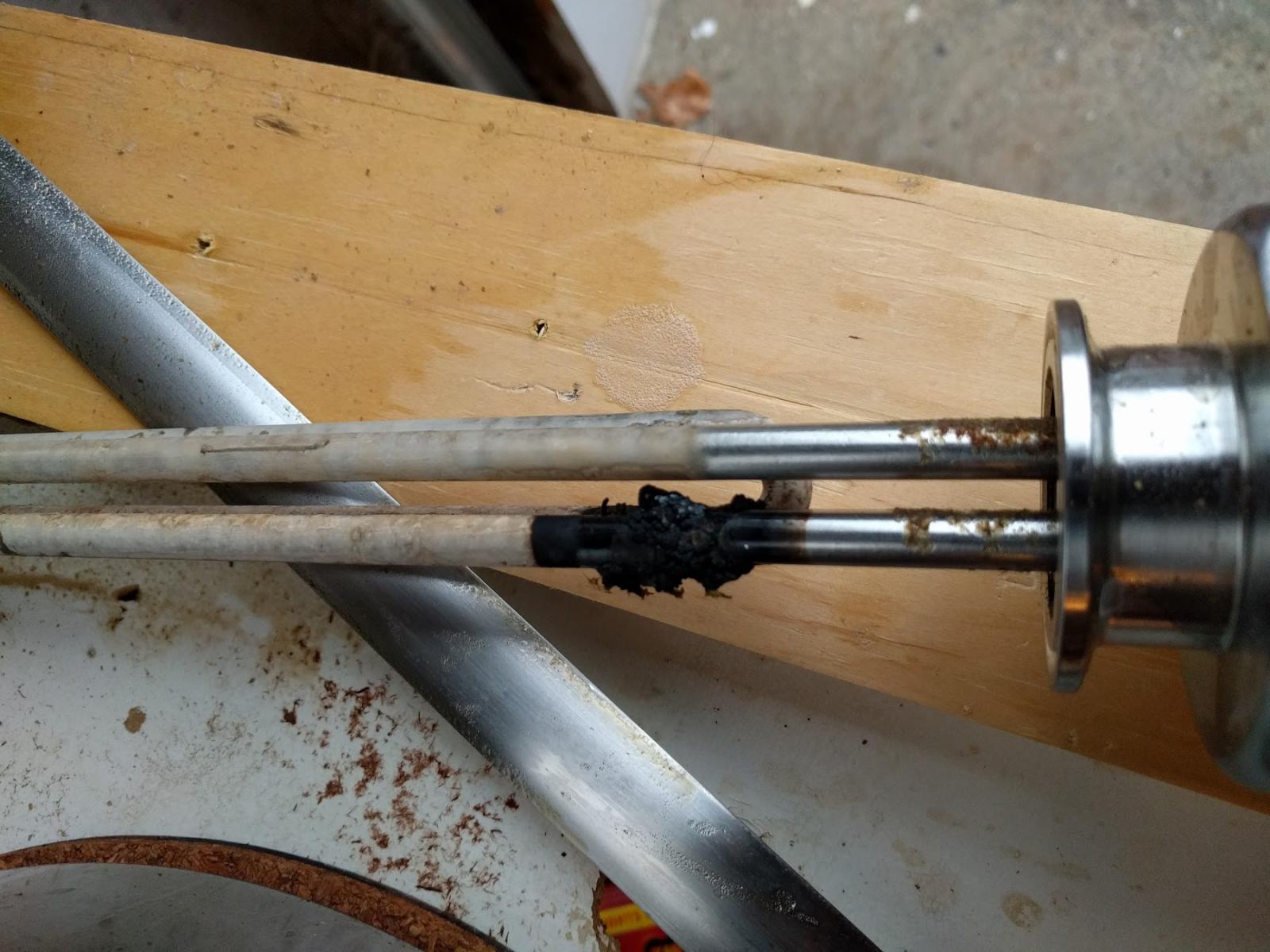I was making a Winter Warmer, which included adding 1lb of dark brown sugar to the boil.
Knowing that it could possibly scorch the element, I added it to the side of the kettle, away from the element.
About 45 minutes later, I heard a POP, and the top of the wort splashed out. Thinking that the seal between my element and it's enclosure had failed, or been breached, I flipped the circuit breaker for my rig.
After draining the kettle, I found the scorch area in the photo below.
Fortunately, as I'm dealing with 220V, the seal between the element and it's enclosure was bone dry.
I'm thinking that the added brown sugar scorched and formed some sort of connection between the 2 parts of the element.
Opinions or any advice (already figured any added sugars in the future will be made into a simple syrup first, before adding to the BK).

Knowing that it could possibly scorch the element, I added it to the side of the kettle, away from the element.
About 45 minutes later, I heard a POP, and the top of the wort splashed out. Thinking that the seal between my element and it's enclosure had failed, or been breached, I flipped the circuit breaker for my rig.
After draining the kettle, I found the scorch area in the photo below.
Fortunately, as I'm dealing with 220V, the seal between the element and it's enclosure was bone dry.
I'm thinking that the added brown sugar scorched and formed some sort of connection between the 2 parts of the element.
Opinions or any advice (already figured any added sugars in the future will be made into a simple syrup first, before adding to the BK).


